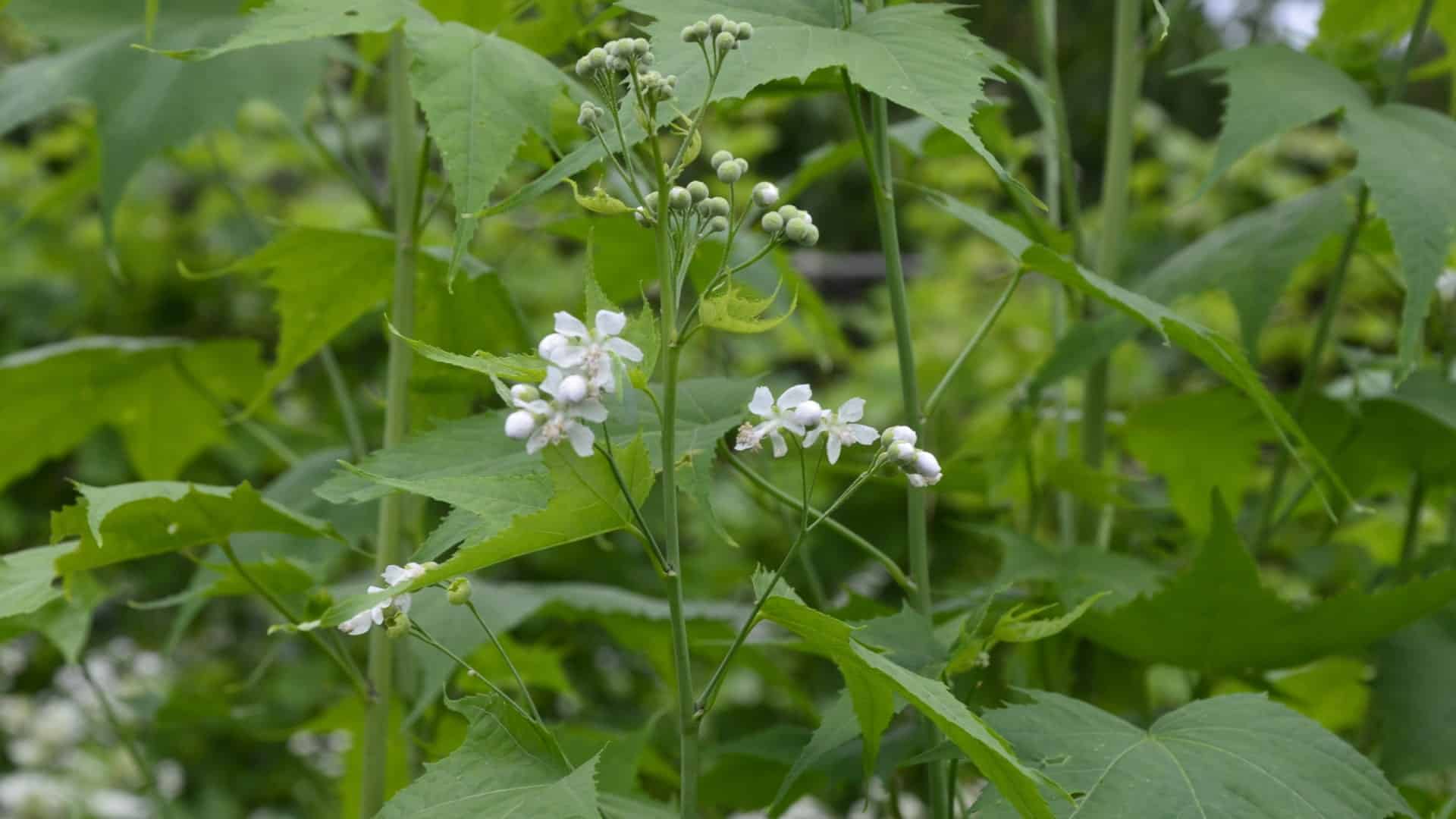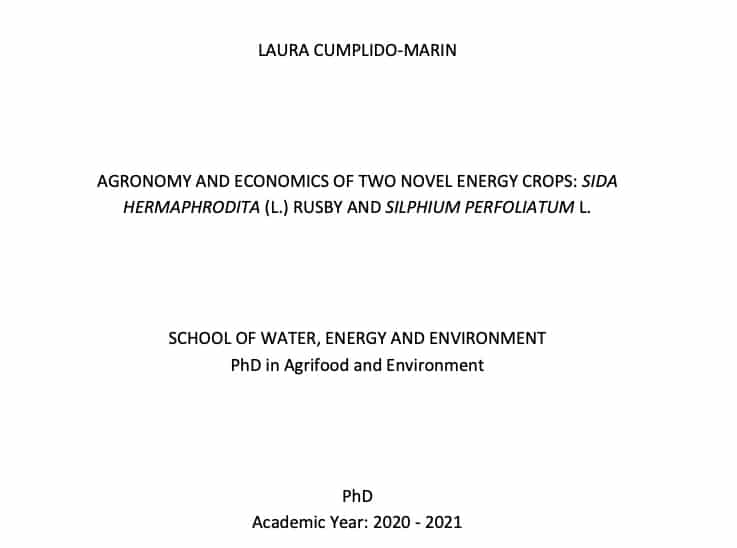Sida
Sida hermaphrodita
General info
S. hermaphrodita is a perennial herbaceous forb species native to the eastern United States. It is neither a grass nor a short rotation woody crop, instead it can be defined as a soft woody herbaceous energy crop. The species was introduced from the USA to Europe in the 1930s and was initially trialled as a fodder and fibre plant due to its favourable proteins, amino acids, vitamin C, carotene and other important elements (similar to alfalfa).
More modern breeds have been developed to grow to larger heights than wildtype variants, with up to 4m heights achievable within 4 months in East European studies. It is often cultivated from seeds and subsequently shoots emerge year on year from belowground rhizome structures. The species are known for a deep penetrating root system allowing exploitation of significantly deep levels of soil nutrients and water.
Cultivation and agronomy
In Central and East European research climates, growth of S. hermaphrodita has indicated the potential to harvest 9–17 oven dried tonnes ha-1 yr-1 for crops established from seeds or 20 oven dried tonnes ha-1 yr-1 from root cutting established crops. It has an energy profile comparable to Arundo, switchgrass, poplar and willow at 18.75 MJ Kg-1 and continues to produce biomass at equivalent levels for up to 24 years. Though actual biomass yields achieved are heavily influence by environment and specific management conditions on cultivation.
This harvested biomass is favourable because it is very easily granulated, meaning there is minimal energy consideration associated with the drying process for the production of pellets and briquettes compared to many other bioenergy crops.
This species is adaptable to a range of soil conditions but grows best under wet soils. Despite this, in direct comparison with Salix spp. for example, it is far less susceptible to yield impacts relating to lower moisture and rainfall. These properties make it another bioenergy crop with high potential for utilisation in marginal soils to avoid food production competition (though it is noted to achieve sufficient above ground biomass for efficiency to other crops, fertilisation may be required).
It has been demonstrated in a 6-year study that different dressing of S. hermaphrodita seeds can have significant impacts on subsequent years’ cultivation biomass yields. Stalk bending issues have been observed due to both fungal infections and high wind loads on this species potentially impacting biomass production. Trials to investigate planting densities for agricultural bioenergy planting of this species are currently limited but, in those that have been performed, 4 plants per m2 demonstrated the best 3-year returns with regards to tonnes of dry mater ha-1 despite individual year benefits to some of the lower plantation densities.
A key cultivation consideration for this species is the suppression of weeds via herbicides in the establishment period, which may require subsequent research into more environmentally considerate weeding strategies in future. One suggested application in this direction is initial intercropping with legumes to outcompete weeds, whilst also supplying N to the soil for S. hermaphrodita benefit and to prevent some levels of evaporation to provide more moist soils as desired in years of low precipitation. S. hermaphrodita can easily be harvested, with crop choppers as applied to maize, meaning bespoke machinery is not an issue.
Return to crops overview
Relevant research
Borkowska, H., & Molas, R. (2012). Two extremely different crops, Salix and Sida, as sources of renewable bioenergy. Biomass and Bioenergy, 36, 234-240.
Jablonowski, N. D., Kollmann, T., Meiller, M., Dohrn, M., Müller, M., Nabel, M., … & Schrey, S. D. (2020). Full assessment of Sida (Sida hermaphrodita) biomass as a solid fuel. Gcb Bioenergy, 12(8), 618-635.
Nabel, M., Schrey, S. D., Temperton, V. M., Harrison, L., & Jablonowski, N. D. (2018). Legume intercropping with the bioenergy crop Sida hermaphrodita on marginal soil. Frontiers in plant science, 9, 905.
Additional Resources
Read the ‘practioner leaflet‘ on Sida kindly shared with us by author Laura Crumplido-Marin of Cranfield University.
You can also read Laura Cumplido-Marin’s PhD Thesis: Agronomy and economics of two novel energy crops: Sida Hermaphrodita (L.) Rusby and Silphium Perfoilatum L.



